


Where you can find the best book at the right reading level and spark (or fuel) a life long love of reading in your kids!



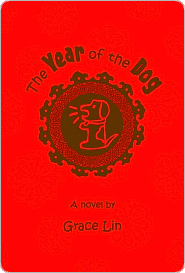


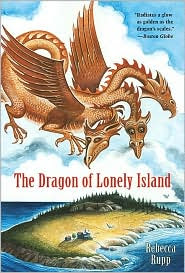




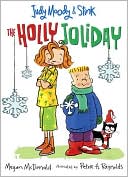
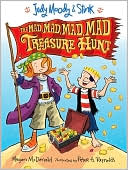
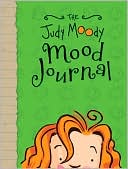
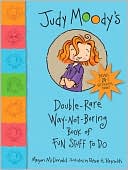
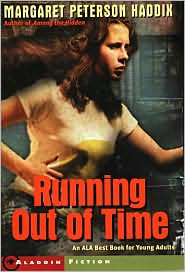
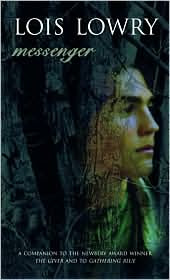


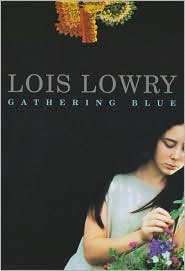


As Lowry said to a room full of children's librarians when giving her acceptance speech ( am ust read if you are interested in how Lowry came to write this book) for the Newbery, an award which is presented by the Association for Library Service to Children,
"Let me say something to those of you here who do such dangerous work. The man that I named The Giver passed along to the boy knowledge, history, memories, color, pain, laughter, love, and truth. Every time you place a book in the hands of a child, you do the same thing.
It is very risky.
But each time a child opens a book, he pushes open the gate that separates him from Elsewhere. It gives him choices. It gives him freedom. Those are magnificent, wonderfully unsafe things."
Although much less elegantly and succinctly, this is the point I was trying to make with my explanation above. Reading a book can encourage empathy, understanding and open up a world of choices and freedoms. It can also make you question something you thought you understood or something you never even bothered to think about before. But, for every thing chosen, some thing is left behind, some thing is not chosen, even denied. The Giver is a book that makes the reader aware of and grateful for the choices that we have but also opens eyes to the things we leave behind, the choices, things and people we sometimes forfeit when we choose one over another. As I said, I hope that you will read this book with your children, or, even better, before your children read it, and participate in a conversation during and afterwards. After re-reading the book I was inspired to have my husband, sixteen year old daughter and twelve year old son read the book so that we could have a discussion about it. We sat around the table at dinner and had a great conversation. Not only were we going over plot points and details in the story, but we were discussing ideas and themes and how, even though we have many, many freedoms, we still forfeit a lot of personal choice in order to make our lives run more efficiently and free us up for other pursuits. We discussed this as we sat on the patio of our tract home while I was wearing clothes, shoes and underwear bought entirely from one store. The significance was not lost on me...
This is a different kind of review for me. Instead of summarizing the plot and pointing out interesting details, I am going to stick to the themes of the book. If you have never read The Giver, I think it is very important for you to draw your own conclusions from what you read. One of the beauties of Lowry's deceptively simple book, a point she makes in her acceptance speech, is how every reader brings something different away from it - including multiple interpretations of the somewhat ambiguous ending. I would like to forewarn parents that there is a scene in the book in which an infant is euthanized, in accordance with the rules of the Community. The infant is an identical twin and it is accepted that it would be confusing to the Community to have two people who look the same coexisting within the city. Thus, at birth, the identical twin who weighs less and is therefore less likely to thrive, is "Released" - the Community word for euthanasia. Lowry includes this as part of the book to illustrate the ways that the Community has come to accept practices that are utterly horrific and inhuman as a means to an end. To one degree or another, we all do this in our daily, adult lives. Whether it is averting our gaze from a homeless person or, as Lowry notes in her speech, breathing a sigh of relief when, on hearing the news that a gunman has killed several people in a fast food restaurant, she discovers that this event did not take place in her community but in another state.
The Giver is set in what is meant to be a utopian community but is really a dystopian community. The word utopia has Greek roots and literally means, "no-place land," or fantasy land. Dystopia, which is the direct opposite of utopia, refers to a utopian society in which things have gone wrong. The most famous work linked to this word/idea is Sir Saint Thomas More's Utopia, written in Latin in 1516. More's work was intented to be a platform from which the chaotic political structure of Europe at the time could be discussed and is often read as a satire. In literature, which seems to be the only place utopias exist, both utopias and dystopias share characteristics of science fiction/fantasy are usually set in a future in which technology has been used to create perfect living conditions. However, once the setting of a utopian or dystopian novel has been established, the focus of the novel becomes the psychology and emotions of the characters who live under such conditions. This is true of Lowry's work as well. The first few chapters of The Giver introduce us to the main character, Jonas, and describe his life in the Community then delve into the consequences of the way of life these people have chosen to live.
All choices are made for citizens, from career, marriage, parenthood, and death because the chance for someone to make the "wrong" choice is too risky. Some citizens are deemed unsuitable for marriage or parenthood and live alone instead of with a family unit. Birthmothers work for three years bringing new life into the Community and then are given a jobs as laborers until they are ready for the House of the Old. Once there, they will live comfortably until they are honored with a celebratory ceremony and released, like all other elders in the Community. After evening meals, families have a time in which they "share their feelings," which is ironic since they have no idea what real feelings are as they are trained to suppress them. At morning meal, families share their dreams, mostly as a means to determining when a child begins to have romantic feelings for the opposite sex. When this occurs, all citizens begin taking a pill that, one assumes suppresses sexual desire. As with other serious aspects of the novel, Lowry is subtle with her writing, perhaps mainly as a way of illustrating the subdued and unknowing life of the citizens of the Community.
Somehow, I find myself thinking that, in many ways, Lowry's utopian Community and its citizens are metaphorically the mirror image of the experience of childhood. The Committee of Elders are parents who shield the Community from pain and difficulty as a way to keep them safe and intact, both emotionally and physically. There are so many things that we keep from our children, protect them from, and rightly so, but at the same time they are living in varying states of ignorance, unable to comprehend the world beyond their narrow existence. The citizens of the Community live in this same state of ignorance. While it is understandable and preferable for children not to have to or be able to comprehend painful and difficult aspects of adulthood, what are the implications for adults who allow themselves or choose to be shielded in the same way?
In order to exist in this structured, minimal manner, the Committee of Elders relies on one person in the Community to live outside the rules in order to know and understand the ways of the rest of the world as well as know and understand the history of the world, something the Community citizens have no inkling of. This person is called The Receiver, because s/he receives this information, this knowledge, and then is able to answer questions regarding serious matters should they arise. An example in the The Giver is a time when an unauthorized aircraft enters into the the airspace of the Community. The Committee of Elders consults The Receiver as to how to respond to this. Having never known hunger, the Council also consults The Receiver when citizens of the Community petition the Committee of Elders to increase the rate of births so that the population would increase and there would be more Laborers. The Receiver, with his vast wisdom acquired from the memories he has access to, is able to remember, from centuries back, the feeling of hunger and advised them against the idea. The Receiver possesses memories that are intensely painful, brutal and vicious. He also possesses memories of beautiful things like color, music and love. And, The Receiver has access to all aspects of life in the Community. He is allowed to lie and he is allowed to ask questions, two important things that other citizens are not allowed to do.
As my family and I read The Giver, we kept a notebook in which we all wrote down questions that occurred to us as we read. It doesn't serve the book well to get too technical in questioning the rules of the Community, however there are many details that are worthy of discussion. I'll share a few here that came up in our book talk. I would love to hear back from anyone, parent or child, who reads this book, especially if you have the chance to discuss it in a group. So far, after completing 10th and 5th grades, my children have not had to read this book for school, which really surprises me. I'd also be interested if anyone's children have had to read it for school and how that went. I think it remains a controversial book in many places.
Precise Speech: Why is it important to be exact in speaking to others? And why does the Community use euphemisms like "Release?"
What is the value of the individual in the Community?
Why is it necessary to exclude pain, pleasure, color, music, love and animals in the Community?
What is it about memories that causes them to be excluded from the Community?
Is Sameness ever worth the cost?
What is so important about memories - why do they have to be eliminated from the lives of the citizens of the Community? How do memories make us individuals?
Notice the contrast in writing style when Lowry is describing memories that The Giver is transmitting to Jonas.
Lois Lowry has written two other books loosely linked to The Giver, making a trilogy.As an interesting aside, while researching this review I discovered that Lois Lowry, also a photographer, took the cover photos for all three of these books. Lowry tells a very interesting story about the gentleman on the cover for The Giver in her Newbery acceptance speech that is worth checking out. Gathering Blue and The Messenger are both set in radically different communities that exist nearby the Community of The Giver. In fact, the Village in Gathering Blue almost makes you want to return to the Community. Gathering Blue can be read independently of The Giver, however both must be read in order to understand and appreciate The Messenger. Gathering Blue is one of my favorite books, Kira, the main character, is a very insightful, courageous, strong character who navigates the choices and compromises she must make as a "chosen" member of the community much in the way Jonas did.